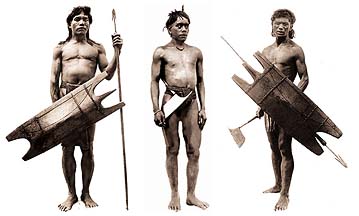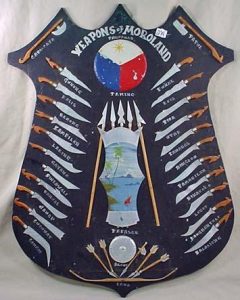Kali – The Filipino Martial Arts
You may have seen Filipino Martial arts / Kali depicted in many movies including, The Hunted, The Book of Eli, The Bourne Series, and many more, but this art goes so much deeper then the silver screen. It has a real history and legacy of effective martial arts.
What is “Kali”?
Kali, is an umbrella term that refers to the indigenous arts of the Philippine Islands. According to the leading expert, Guro Dan Inosanto, “Kali” melds the 2 Cebuano words “kamot”, (meaning hand), and “lihok”, (meaning motion) together. Which translated means Hand Motion or “KaLi”. This family of arts may also be known as Eskrima or Arnis. By any name, make no mistake this is a beautiful and effective martial art.
A Bit of History

The need for self-preservation was the genesis of these martial arts. The islands that we now know as the Philippines holds a very important place in Southeast Asia. Over the eras, the Philippines were sought after as an important tactical military position and also as an important place for trade and commerce. So the indigenous people had to learn to develop battle skills as a direct result of invasion and occupations of their lands. Due to their ever-changing circumstances, they learned how to prioritize, allocate and use common resources in combative situations. So it was common for the people to carry an edged weapon, sword, dagger or some type of farm tool. This may be why this area of the world is know to a “Bladed Culture”
 Over the years, due to forced occupation, limited resources,or safety in training concerns the method of training moved toward using the rattan stick as the main training tool. It was a plentiful resource that that could be carried without suspicion. Warriors that had their weapons taken could still keep their skills sharp. Also many warriors may have only had a single weapon, so constant training with it would make it dull and not ready for battle when needed. Over the years there have also been systems that have developed with stick as a primary weapon. Either way, now modern days you can see practitioners training with the rattan stick as way to learn, train and retaining the skills that are based on the movement of an edged weapon without the need to train with a live blade.
Over the years, due to forced occupation, limited resources,or safety in training concerns the method of training moved toward using the rattan stick as the main training tool. It was a plentiful resource that that could be carried without suspicion. Warriors that had their weapons taken could still keep their skills sharp. Also many warriors may have only had a single weapon, so constant training with it would make it dull and not ready for battle when needed. Over the years there have also been systems that have developed with stick as a primary weapon. Either way, now modern days you can see practitioners training with the rattan stick as way to learn, train and retaining the skills that are based on the movement of an edged weapon without the need to train with a live blade.
 Although, Kali trains the weapon first. It may also be one of the most complete expressions of martial art in the world. As I have been taught there are 12 areas of training in Kali:
Although, Kali trains the weapon first. It may also be one of the most complete expressions of martial art in the world. As I have been taught there are 12 areas of training in Kali:
Double Stick (sword or ax), single stick (sword or ax), stick and dagger, dagger, sword and shield, spear/staff, 2 handed weapons, flexible weapons, projectile weapons, empty hands (which has 5 subcategories), healing aspects, and spiritual considerations. So, as you can see Kali covers many of the martial arts “bases”.
Practitioners of the Filipino martial arts are well known for their organic approach toward drilling. This approach develops an innate sense of fluidity of motion. This gives the training a more realistic feel for the movement and speed of combat. For these reasons, Filipino Martial Arts is considered to be the most advanced practical modern blade system in the world and are now a core component of many of the world’s military training systems.
Credit where credit is due.
My exposure to the Filipino martial arts is due to the unselfishness of Guro Rick Faye and Guro Dan Inosanto. These 2 men have traveled the world sharing the benefits of martial arts and Filipino martial arts specifically. Those of us that train in these arts owe many thanks to these men for there dedication and unselfishness.
Guro Dan Inosanto
Mr. Inosanto has done more research into Kali than any martial artist living to today. His unique situation gave him access to many of the great Filipino masters. Sebastian Inosanto, Guro Dan’s Father, was the Treasurer to the Filipino Agricultural Laborers Association. When many Filipinos immigrated to the US after World War II, Guro Inosanto’s father was a main point of contact. Guro Inosanto has taken his experience of learning from at least 26 different instructors to develop a expression of Filipino martial arts that pays homage to the art as a whole. His humble, “Forever a Student”, philosophy is one the reasons that Mr. Inosanto has been able to learn for some many different legends within the art. And his willingness to share that knowledge is what make him truly special.
Guro Rick Faye
Among his many distinctions, Guro Rick is one of a very few Senior Full Instructors under Guro Dan Inosanto. His passion for the martial arts, loyalty to Guro Inosanto and his method has been a put a shining the light on the Filipino martial arts. One of the things that makes Guro Rick such a treasure to the martial art world is that he takes something that can be seen as a dangerous art and focuses on the benefits that it has for all people. One of the most important things that I have learned from Guro Rick, is that anyone can do martial art and that everyone’s expression is valid. While Kali can be a very deadly and effective art, Mr. Faye has displayed that it can also be an art of health and healing. With this focus Guro Rick has help to make this art accessible to everyone.
What are the benefits of training in Kali – Filipino Martial Arts?
This art, when properly trained, can be effective means of self-defense. But more importantly, as mentioned before, Guro Rick Faye has influenced MKG Madison to make this wonderful art accessible to everyone by highlighting all of the other positive benefits, other the combat. The deliberate use of left and right hand techniques develop physical coordination. More importantly, this method of training can also develop, retain and maybe even repair, neural pathways in the brain. So, in short Kali is can be a holistic approach to developing the body and the mind. Filipino martial arts drills and techniques taught in a fluid, non-restrictive manner. Training this way allows students to enhance their natural attributes and improve their sense of timing, speed, awareness, balance, agility, and confidence. And most importantly it is just great fun!
